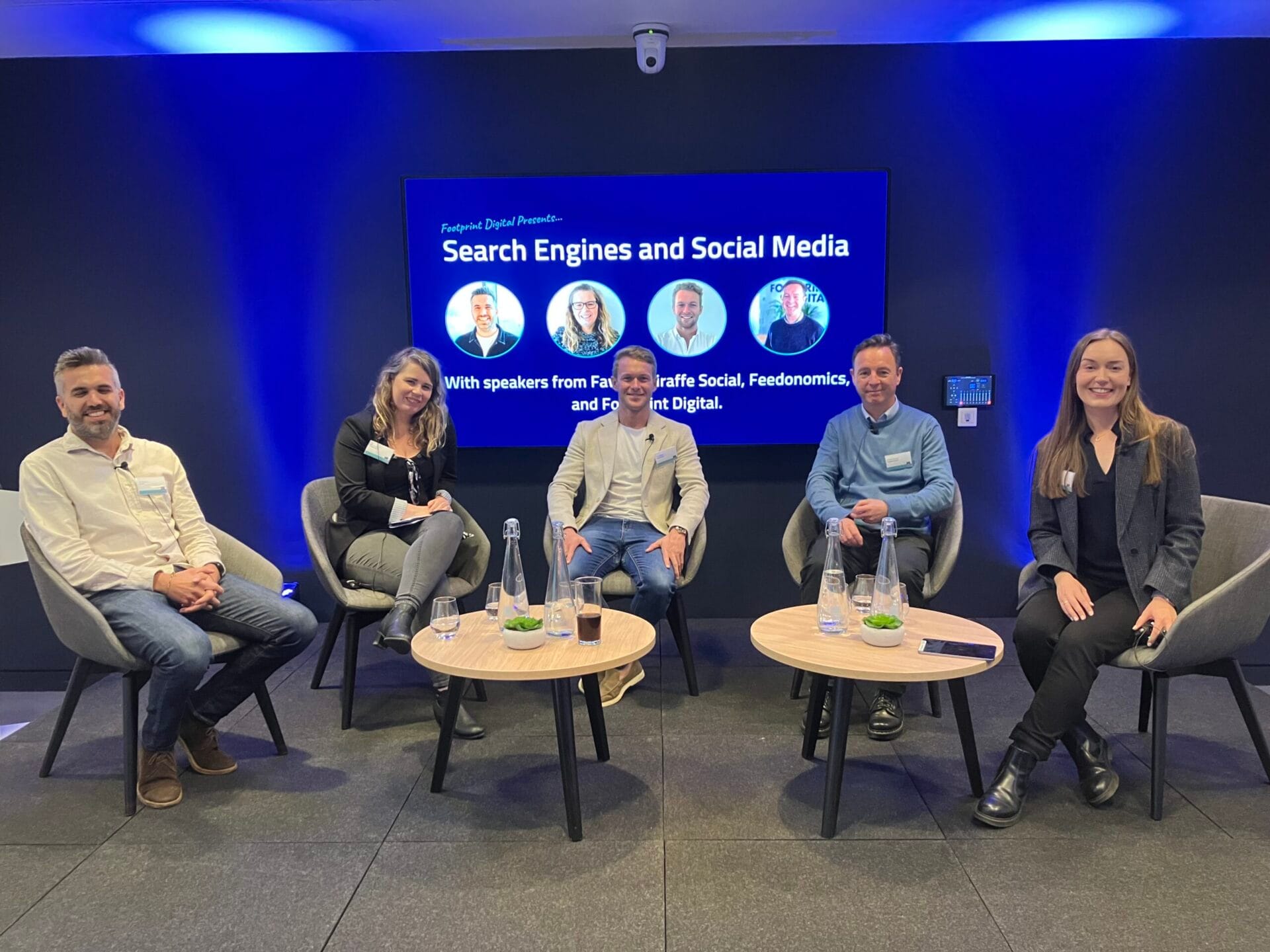
Blog
Search Engines and Social Media: Do Search Engines Need to Evolve to Stay Relevant?
11th Jun, 2024
How can search engines and websites adapt and evolve to remain relevant in the era of social media dominance, especially considering the personalised content experiences offered by platforms like Instagram?

Welcome to the third instalment of our panel discussion, looking at the evolving landscape of search engines and websites in the era of social media dominance. As platforms like Instagram offer highly personalised content experiences, are traditional search engines and websites facing the challenge of staying relevant and engaging?
This discussion between Alex Jeater, Kate Webster, Tom Walker and Mick Scanlon delves into how search engines can innovate their result delivery, including integrating more dynamic content like videos and imagery, to meet the growing expectations of users. We’ll explore the importance of consistent and engaging content across both social media and websites, ensuring a cohesive brand experience.
Additionally, we’ll discuss the balance between maintaining distinct identities for search engines and social media platforms, and how businesses can leverage these differences to optimise their marketing strategies.
Join us as we uncover the strategies and tools needed for search engines and websites to thrive in a rapidly changing digital environment.
Mick: This question really has far reaching implications on where you put resources and focus your efforts as a marketer. When we talk about search engines, the reality is that they are going to have to do something about the way they deliver results.
We’ve got the knowledge graph, we’ve got local results, we’ve got ‘what other people search for’ and that’s Google’s way of dealing with some of these things, but there has to be more. People have spoken recently about how Google’s search pages lack video content. Google’s shied away from that because they don’t want to turn their pages into AltaVista from back in the day and look ugly and horrible, but there needs to be something that changes soon because people want moving content and imagery.
It’s the tools that they offer to marketers and businesses to explore that space that will change a lot. I’ve been talking about YouTube a lot, but I do still believe that YouTube has legs for Google to do something dramatic with it and not rest on their laurels. I think that’s coming because it will play a large part in how they combat competition in the social landscape.
In terms of content, I lean more towards talking about websites. If your audience is engaged on Instagram and they see beautify imagery and interesting videos, and then they go to your website and it looks as though it’s been made with lego and crayons… it’s old and clunky, it might be a turn off for people who are expecting something a bit more engaging and similar to your social media accounts. It’s all part of the same experience, so you need to make sure your brand is reflected everywhere – get some great content on your website. It’s not enough to have your homepage set up as an online business card anymore, you’ve got to have engaging content.
Do you want to know a way to increase the time on your website immediately from ten seconds to a minute? Put a minute long video on your homepage. Suddenly people will stay there and watch the video. It’s not rocket science but people don’t do it.
Tom: At Feedonomics, what we do is product feed optimisation. I like it when channels stay separate because what we understand is that consumers on each platform shop differently and search differently for products.
Having that omnichannel presence across the board, whether that be Google, Meta, Amazon, that allows you to target a potential customer who has a different journey and different behaviour to somebody else. Who you target on Google might not be the same person as you’re targeting on Instagram. So, I quite like the fact that social media and search engines are quite separate at the moment and I hope they do retain their differences rather than becoming homogenous because it allows different product feed creation and targeting.
Kate: We talk a lot with our clients about having a human first approach to social media, and bringing the people who create the products to the forefront – it would be nice to see more of that humanisation on websites, too. Like Mick said, sometimes websites are just seen as a calling card and they’re very static and boring, but why can’t we emulate more of the trust factor and authenticity that we talk about on social media onto the website?
Things like video testimonials rather than having them written out – video is much more authentic, written testimonials are often seen as fake or are less trusted. The reason why people have been drawn to social not search is to really experience products and services and if a website can do more of that then it’s more likely to be able to compete in that space.







